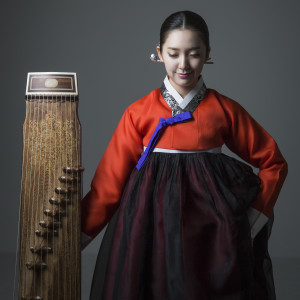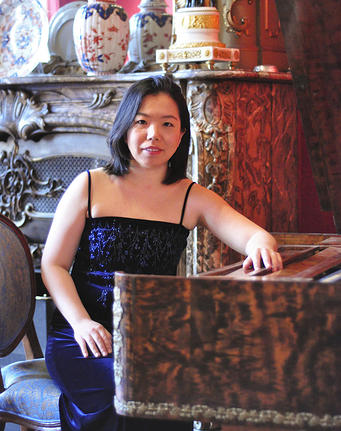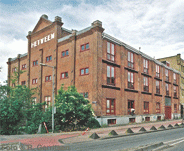‘Geometry of Lamentation’ – In Memoriam of Chopin
22 oktober 2016 | 20.00 uur
| Werkgebouw Het Veem, Amsterdam

‘Geometry of Lamentation’ – In Memoriam of Chopin – Emotions from Western and Far-Eastern cultures
Dance and Music with Fortepiano & Kayagum (Korean traditional string instrument)
Dance – Jihyun Youn
Kayagum – Munjung Chang
Fortepiano – Tae-Young Kim
Dance – ‘Geometry of Lamentation’ (solo dance)
How can we convey a specific emotion into geometry?
Korean dancer Jihyun Youn’s research is about the relation between movement and a specific emotion; the lamentation. She found the starting point of this work from the choreographic method of ancient Korean and Japanese court dances. She is fascinated by the particular ‘abstractness’ of these ancient court dances. In spite of their rich original tale, the movement itself, along its historic path, has become abstract. Her attempt in this work is to isolate the movement as a single event, without meaning or reference; so it can reveal itself strongly in the present.
Music – related to funeral ceremony and its emotion
During Chopin’s funeral in October 1839, Chopin’s Funeral March and Mozart Requiem was performed. (Chopin left in his will his wish that Mozart Requiem be played for his funeral). Chopin’s Funeral March and Mozart’s Lacrimosa from his Requiem will be performed on kayagum and fortepiano, by two Korean women musicians and fuse into ‘Jongmyo Jere’ (1448-1463), traditional Korean royal ancestral ritual music, performed with dance.
In reference to Chopin, short improvisations will be performed, like some alphabetical design, shaped around Chopin’s name. We will hear two types of kayagums (with 12 & 25 strings) and a Viennese fortepiano with bell & drum pedal (which will bring a similar sound effect as with Korean traditional instruments to accompany the kayagum).
Program ‘Geometry of Lamentation’
Frédéric Chopin (1810-1849): Marche Funèbre / Funeral March (1837)
– 3rd movement from Piano Sonata in B flat Minor Op. 35 (1839)
Wolfgang Amadeus Mozart (1756-1791): ‘Lacrimosa’
from Requiem K. 626 (1791)
King Sejong the Great (1397-1450): Music from ‘Botaepyeong’ of ‘Jongmyo Jerye’
– The Royal Ancestral Ritual in the Jongmyo Shrine and its Music
(Composed in 1448 / accomplished by King Sejo, Sejong’s son in 1463)
note: ‘Jongmyo Jerye’ belongs to the most important intangible cultural treasures of Korea and is listed by UNESCO as intangible cultural heritage.
About the kayagŭm (gayageum)
Described as a 12 string half-tube plucked zither with movable bridges, kayagŭm (gayageum) is one of the most widely performed traditional musical instruments in Korea. Throughout history, gayageum music has been enjoyed in diverse venues, in court, amongst the literati and the common people. Its form is included not only ensemble music, but also solo music and vocal accompaniments. From 1985, some newly developed versions of the instrument were introduced, which included the 17, 18, 21, 22, and 25 string gayageums. In accordance with such modifications, new techniques and sound expressions have been developed by composers and performers.
Mun-Jung Chang – gayageum artist
Mun-Jung Chang is a well-known young solo gayageum artist in Korea. She has B.A. and M.A. in Korean Trational Art, and specilized in gayageum, from Korea National Univesity of Arts. (with thesis : Composed by Klaus Huber Analytical Study on “Rough Brush Tip” for Gayageum and Buk). She was formerly one of the main gayageum peformers in the National Busan Gugak Center for and instructor at Gugak National High School.
She has delivered a wide range of performacnes from Jongmyo Jerye (The Royal Ancestral Ritual in the Jongmyo Shrine and its Music) to Sanjo in both domestic and international stages. She has also been invited several solo recitals and her specialty is to perform “the full version of Choi Ok-Sam Gayageum Sanjo”. From these diverse experineces in gayageum performance, she was honorably awarded reputational prizes from Ministry of Culture in Korea and Embassy of Japan. One of the recordings of her performance is available on TBS eFM, Gugak Program Records.
She is now a Successor of The Royal Ancestral Ritual in the Jongmyo Shrine and its Music (Most Important Intangible Cultural Treasure of Korea) and now works as an independant gayageum performer, based in Amsterdam, The Netherlands.
Ji Hyun Youn – dancer
Born and grown up in South Korea and lives in Amsterdam. Since her young age she trained classic ballet and Korean traditional dance techniques.
In 1999, Ji Hyun Youn moved to The Netherlands to study new dance techniques and choreography at
EDDC (European Dance Development Center) in Arnhem and after her graduation, she continued her study at DasArts (Master in Theater) in Amsterdam.
Now she works as freelance artist and creates projects in collaboration with Theater Adhoc, Lupitapulpo Dance Company, composer & trombonist Hilary Jeffery, organist HyoBi Park, film maker Jeanette Groenendaal, visual artist Eun Young Lee, Dirk Jan Jager, performing artist Alma Quintana and many other artists in Europe, Mexico and Brazil.
Ji Hyun Youn presents her artwork in theaters and festivals, in Amsterdam, Rotterdam, Berlin, Belgium, Mexico and Brazil.
She was invited to several artist-in-residencies around Europe to create workshops.
Location:
This performance will take place in the Werkgebouw Het Veem, Van Diemenstraat 410
at the podium of Essential Arts / Toets des Tijds
Instrument:
Fortepiano grand Böhm 1825 (copy Jan van der Sangen 2000) with gayageum
Cooperation:
This effort is organized in cooperation with Toets de Tijds (Stichting Essential Arts) and the Chopin Stichting Nederland.
‘Geometrie van de Weeklacht’ – in Memoriam Chopin
De in Nederland wonende Koreaanse danseres Jihyun Youn onderzocht de relatie tussen beweging en een specifieke emotie. Het uitgangspunt voor de choreografie van haar nieuwe werk ‘De geometrie van de weeklacht’ vond ze in Koreaanse en Japanse hofdansen. Met name in het abstracte karakter ervan. De muziek In memoriam Chopin legt een relatie met de emoties van begrafenis rituelen. Op Chopins’ begrafenis werd Mozarts Requiem gespeeld, in dit dansconcert wordt het Lacrimosa daaruit gespeeld door twee Koreaanse musici Tae-Young Kim en Munjung Chang op fortepiano en kayagum – een traditioneel Koreaans snaarinstrument. De lamentatie gaat over in traditionele Koreaanse rituele hofmuziek uit de 15e eeuw, gecomponeerd door Koning Sejong de Grote (1397-1450).
Korte improvisaties (gebaseerd op de letters van de naam Chopin) op verschillende kayagums – Koreaanse zithers met 12 of 25 snaren – en de Weense fortepiano, die met trommel en bel een geluid kan maken dat in de buurt komt van het geluid van de traditionele Koreaanse begeleidings instrumenten, completeren het programma.
Dit concert en dat van de dag daarop, zondag 23 oktober, vindt plaats in gezamenlijke samenwerking tussen ToetsdesTijds / Essential Arts en het Geelvinck Fortepiano Festival 2016.
Deze activiteit vindt plaats onder de auspiciën van de Chopin Stichting Nederland, partner in de International Federation of Chopin Societies en gesteund door de Poolse Ambassade in Den Haag.
Breng de Mesenliches Fortepiano weer tot leven!
Kijk op www.voordekunst.nl/fortepiano hoe u kunt meehelpen deze zeldzame historische piano weer bespeelbaar te maken, zodat u straks ook kunt genieten van de prachtige klanken van deze Mesenliches Fortegrand uit 1820!
Locatie
Werkgebouw Het Veem
Toets des Tijds: pianorestauratie-atelier en concerten Het bijwonen van een ToetsDesTijds concert betekent een zondagmiddag doorbrengen in voormalig pakhuis Het Veem, met uitzicht op het IJ, in een informele en intieme setting luisteren naar klassieke muziek en iets drinken in een pianorestauratieatelier met de uitvoerende musici. Door de nabijheid van de uitvoerenden is de spanning die met hun live uitvoering gepaard gaat voelbaar en inspirerend voor uitvoerenden én luisteraars.Lees verder
1013 CR Amsterdam





